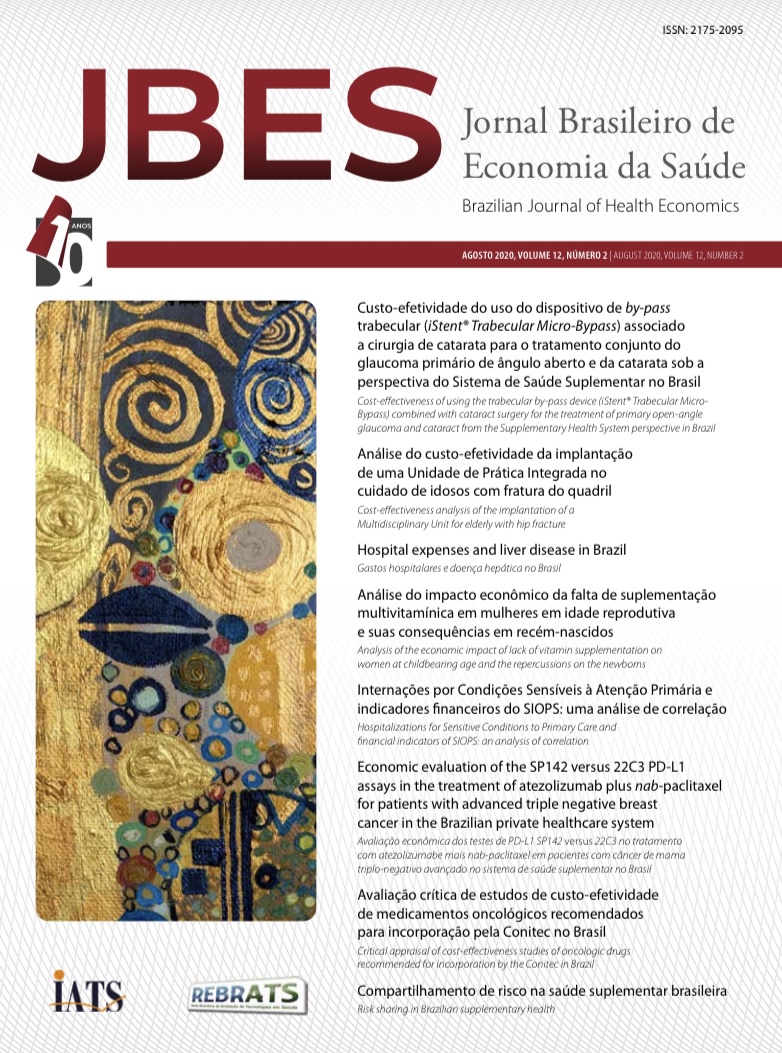Cost-effectiveness analysis of the implantation of a Multidisciplinary Unit for elderly with hip fracture
DOI:
https://doi.org/10.21115/JBES.v12.n2.p121-7Abstract
Objective: Evaluating the cost-effectiveness of the hospitalization of elderly with hip fracture before and after the implantation of a multidisciplinary unit in a service of orthopedics. Methods: Quantitative retrospective observational study. Fifty-three elderly were submitted to the usual treatment and 219 were assisted by the multidisciplinary team. The t Student test and the chisquared test were used to assess factors associated with cost variation and effectiveness, with a significance level of 0.05. For the cost-effectiveness analysis, from the perspective of the health provider considering the direct medical costs, the decision tree statistical model was used. The comparison between the two alternatives was measured by the incremental cost-effectiveness ratio. Results: After introduction of the multidisciplinary unit, the time between trauma and surgery decreased from 4.21 days to 2.47 (p < 0.001), the length of stay from 8.78 days to 6.58 (p = 0.041) and mortality from 22.6% to 8.2% (p < 0.001). The cost of treatment in the two groups did not present a significant difference (p = 0.838). Conclusion: The introduction of the multidisciplinary unit was cost-effective, as it resulted in shorter hospital stay and lower in-hospital mortality.






